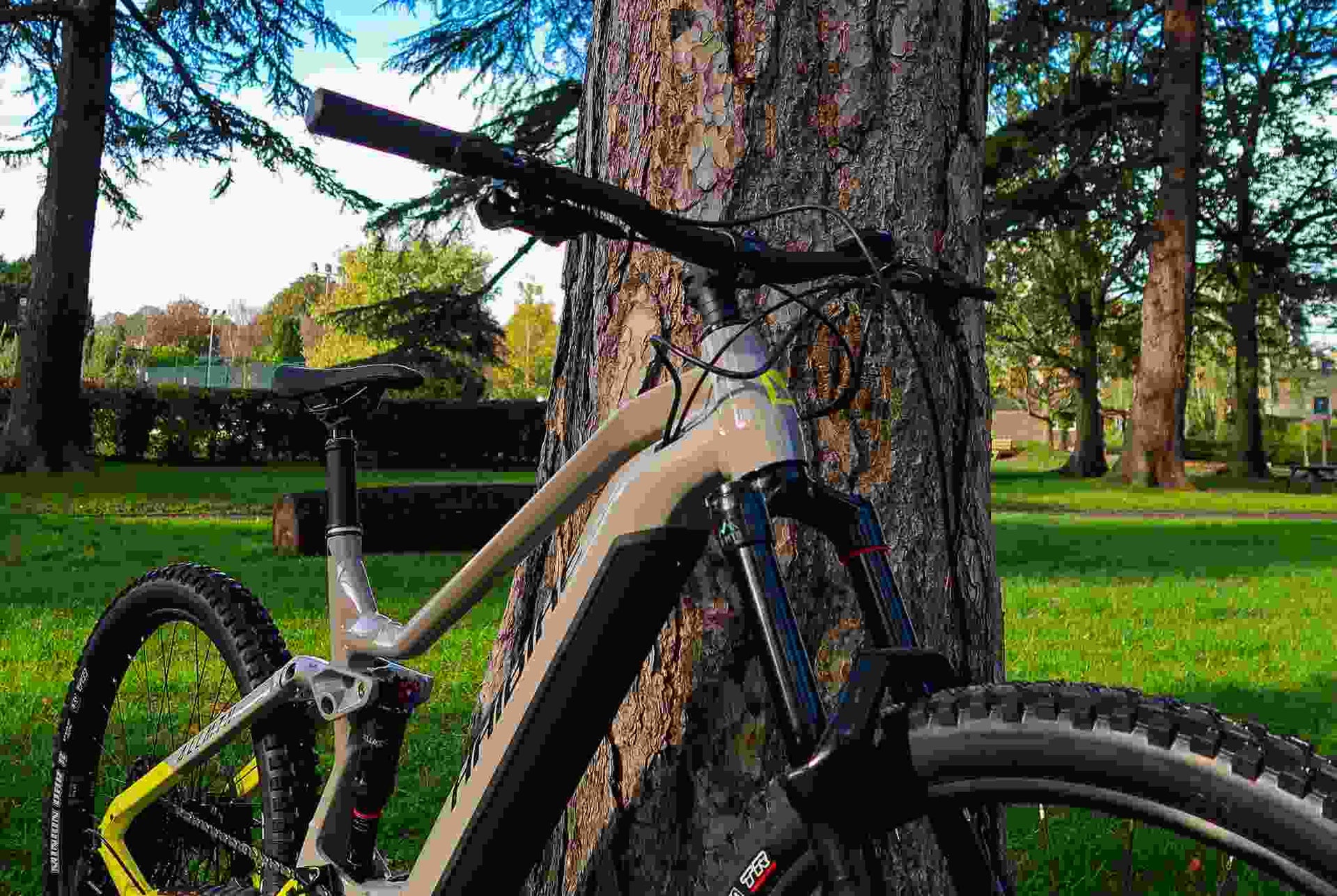An electric bike is quite a technical piece of kit. Do you ever look at the specification of an ebike and wonder what some of the numbers actually mean? Paul our expert runs you through a simple breakdown of what the key ebike numbers on an electric bike are.
Speed
Let’s start with the easiest one, speed. We all know this number which is a measure of how fast we are riding our bikes, driving in a car or even walking. Speed is a measure of distance travelled in a given amount of time. Miles per Hour, kilometres per hour or metres per second for example.
Electric bikes usually have an option to display either a metric (kph) or imperial (mph) speed. We set all of our ebike’s up as miles per hour but if you want it to display metric we can easily change it for you. Just ask.
How fast can an electric bike go? We are regularly asked this question. Well the answer is simple. As fast as you can make it. Consequently, in the UK, law only permits pedal-assisted electric bikes (throttles are technically illegal) to assist you up to 15.5mph (25kmh). Beyond this speed you are under your own steam but there is no limit other than you and the road conditions.
Paul says: When comparing ebikes, don’t worry about top speed. All electric bikes will stop assisting you at the same speed regardless of the type of bike.

Range
This is both the one of the most common ebike numbers customers want to know and the hardest number to work out for them because there are so many uncontrollable variables that will affect it. How far can an electric bike take you? You can ride an electric bike as far as you want. It is a normal bike unassisted, but what customers actually want to know is how far can it assist you before the battery runs out?
Factors that affect electric bike range:
- Battery capacity
- Ebike mode
- Temperature
- Tyre Pressure
- Tyre Tread
- Ground surface
- Weight of rider
- Wind
- Terrain
Let’s quickly take them in turn and explain how each affects the range of an ebike.
Battery Capacity
Your battery is simply a fuel tank and has no bearing on the bike’s performance other than supplying fuel like a fuel tank in a car does. The bigger it is, the farther it will take you however, like a car, if you don’t use it efficiently it will drain more quickly.
Ebike Mode
Electric bikes have different levels of assistance. More assistance requires more power which means more of your battery life. Regularly riding in higher modes will drain your battery more quickly and consequently your range will be reduced.
Temperature
This is simple Li-Ion battery chemistry. Electric bike batteries don’t perform as well in the cold so you will get more range on warm sunny day than a cold winter one.
Further Reading
Tyre Pressure
Cars will burn more fuel if the tyres are not pumped up correctly and the same applies to electric bikes. Keep tyres at optimum pressure to eek a bit more range out of your battery.
Tyre Tread
If you run a knobbly tyre on the road the motor has to work harder, because of the additional rolling resistance, than if you had a slick tyre. If the motor works harder your battery is drained a little more quickly which will compromise your ebike’s range.
Ground surface
If you have ever ridden offroad on a non-electric bike you’ll know first hand how much harder it is. Your electric bike motor feels no different. Range will always be shorter for offroad adventures.
Weight of rider
If you tow a caravan in a car, the car burns more fuel because of the extra weight the engine has to move. Ebike motors have to move the bike and the rider and therefore will have to work a bit harder for heavier riders which takes more power and battery.
Wind
Riding into a headwind is harder than not having too. You could do the extra work yourself or let your ebike take some of the strain for you. That’s the point! If you do, you will draw more power from the battery as the motor works harder, and as we have learned, this will compromise a bit of your range.
Terrain
How hilly your ride is, is a massive factor in how much range your battery can give you. Your range will always be better on less lumpy rides.
As you can see, answering the range question is difficult so most manufacturers and retailers will tend to give you a range between two distances which can be used as a comparison between bikes rather than an absolute figure. We all know the car fuel consumption figures are not attainable for everyday driving conditions, but we can derive which car that has better fuel consumption by comparison. It’s the same here.
Bosch have range calculator which can help work range out too but again it is not absolute and only a guide.
https://www.bosch-ebike.com/en/service/range-assistant
Paul says: I use a quick formula to manage expectations which gives me a conservative figure. I divide the battery size by 10 and add 10. So for a 500wh battery being used in Eco mode, on relatively flat terrain on the road, the battery would comfortably achieve a range of 500/10 = 50 + 10 = 60 miles. From this figure I can say it will be less if offroad, hilly etc.
Battery Capacity
When you review ebike specifications you will often see batteries specified in Watt Hours (Wh) or Volts (V) and Amp-Hours (Ah) but what does this mean? It is one of the most important ebike numbers to understand. A watt-hour is a measure of capacity. A unit of energy equivalent to one watt of power expended for one hour. Watt-hours is a more reliable indicator of capacity when comparing. Batteries represented in volts and amp-hours are more difficult to compare as, for example, high voltage batteries with a lower amperage output are effectively the same as lower voltage batteries and higher amperage output. Manufacturers rarely share these figures, so watt-hours is always the best figure to compare.
However, if you do see a battery shown as volts and amp-hours, here is how to calculate it’s watt-hours (Wh) for comparison.
Let’s take a common ebike battery size represented as 36V, 14.4Ah
Wh (watt-hours) = V (volts) x Ah (amp-hours)
So the watt-hours (Wh) for this battery is simply 36 volts x 14.4 amp-hours = 518.4Wh. Manufacturers commonly round these figures down so this battery may be shown as 500Wh, for example.
Paul says: Always use watt-hours (Wh) as a battery capacity comparison. Use the formula to work it out if the bike spec shows volts and amp-hours.

Torque
Force multiplied by length is torque. It is measured in Newton-metres (Nm). For ebikes, this means the force applied pushing down on the pedals times the length of the crank arm. It is a rotational force. When you turn a door handle, for example, you are applying torque to turn it.
Ebikes generally have maximum torque in the range of 40Nm (Bosch Active Line) to 85Nm (Bosch Performance Line CX). Higher torque motors on ebikes will make moving the bike and rider easier in situations that require the greatest force on the pedals such as a standing start or up a steep hill.
Torque is THE key indicator to pay attention to if you want to compare the performance of motors in electric bikes. Some things to remember. Off-road riding requires higher torque and they are more expensive.
Paul says: Always go for the highest torque motor your budget will allow you. You can’t avoid hills and a higher torque motor is the single biggest asset you can have for them.

Power
Power is the rate at work is being done. In order for torque to do work it needs to be spinning something (your motor!). The faster it spins at a given torque the more work it will do. All legal ebike motors are rated at 250 watts maximum output. This is the law.
To get some perspective for what power output means in human terms, we can look at how many watts a rider may use on a standard bicycle. Just softly pedalling along a flat, tarmac path at approx. 10mph rider is outputting about 40 watts, about the same energy as normal walking. Ride at 20mph and riders require 200+ watts. This is more than most riders can achieve or sustain. Riding up a 10 percent gradient just faster than walking pace takes approximately 150 watts—enough to have most riders breathing and sweating heavily. So a 250-watt motor means that if you are inputting 150 watts through the pedals, in the correct mode e.g. Sport or Turbo, the motor can top that up to the maximum 250 watts. That’s why ebikes feel easy to pedal uphill.
Paul says: All ebike legal ebike motors are 250w so taking this figure alone makes it impossible to compare ebike motors because they are all the same. Concentrate on torque instead.


